A day-trip to Biloxi nets a rich catch of history, culture and delicious meals - seafood, of course!
- story by Karen Fineran, photos Karen Fineran and courtesy Visit Mississippi Gulf Coast and the Mississippi Gulf Coast Museum of Historical Photography
Biloxi Maritime and Seafood Industry Museum
The museum, site of the former Mississippi Naval Coast Guard Base, was established in 1986, was completely reconstructed after it was destroyed by Hurricane Katrina, and was then reopened on its original site in 2014.
The Maritime Museum documents the history of Biloxi’s seafood industry, through hundreds of one-of-a-kind exhibits and artifacts about shrimping, oystering, recreational fishing, wetlands, managing marine resources, marine blacksmithing, boat building, net-making, harvesting techniques and technology and seafood marketing - all the while telling the tale of over 300 years of Gulf Coast history, culture and heritage. Sharing the spotlight is the history of recreational boating, the shipbuilders who still work the craft, and Katrina and other hurricanes that changed the landscape, but not the resolve of people to live near the water. Set next to the pristine park and festival ground of Point Cadet, the three-story museum creates an imposing first impression, with its triangular wall of glass windows facing the Bay. We were surprised at the size of the museum. An easy way to see the entire museum without missing anything is to start on the third floor and work your way down. An added benefit is that the views of the Biloxi Bay Bridge through the glass windows are breathtaking. There are indoor blue lights that shine upon the Nydia at night, and when you’re coming back to Biloxi from Ocean Springs, you can look over the bridge and see the ship through the glass walls. It seems almost like she’s sailing in the evening light.
Displays and text commentary bring to life other aspects of the industry, including cleaning, packing and shipping the seafood, and the environmental impacts of weather and pollution upon the seafood industry.
My friend and I particularly enjoyed exhibits that showed how hard labor (and rusty oyster buckets) eventually gave way to new technologies and machinery that make working in the industry easier. For example, the shrimp-peeling machine, introduced in the 1970s, can peel about 1,000 pounds of shrimp in just one hour. That replaced the work of about 150 workers.
Another impressive item on display is the Ship Island Lighthouse lens. This Fresnel lens was made in the late 1800s in Paris, and was in the old museum when Katrina hit in 2005. The lens is made of several prisms, and the prisms scattered after the storm. Eventually, every prism was found and the lens was restored, keeping the scratches and chips that the hurricane left on the prisms as “battle scars.”
The museum’s unrivaled collection of vintage photos tells the heritage of the seafood story from the time of the first Indian settlement through generations of immigrants whose journeys contributed to the Coast’s melting pot culture.
Photographs, anecdotal stories, video clips, and theater movies give insight into the seafood workers’ lives, their hard work and their inventiveness. Their weary, sweat-drenched faces bring home just what a laborious occupation the seafood industry was and is. Historically, the success of the seafood harvest was dependent on the entire family. The male members of a household were boat owners or fishermen, while women and children of the family usually worked in the factories. Young children worked alongside adults, until a 1908 Mississippi law made it illegal to hire children under age 12 to work in factories.
Like any place where hard work could yield fortune, Biloxi’s seafood industry attracted immigrant labor – first the Polish (by way of Baltimore), then the Croatians and Cajuns, and more recently, the Vietnamese, who were first brought here by local fishermen in the 1970s. In time, these ethnic groups were able to buy their own boats and make their own business, cultural and culinary contributions to Biloxi.
A new exhibit dips deeply into the history of the Croatians, Yugoslovians, French, Vietnamese and other immigrants who came to work in the seafood industry. Their more than 400 stories are told in a permanent exhibit on five computers set up in a dedicated room on the second floor of the museum. Icons on the computer screens display various categories of individuals and companies that have been inducted into the Maritime Hall of Fame which recognizes outstanding citizens and their contributions to the seafood industry. Visitors can choose to view any story that piques their interest.
Don’t miss the “hurricane gallery,” with its continuously running informational movie about the devastation of hurricanes on the Coast. And take the time to walk around the outside grounds, where, among other things, you can take a walk around a World War II submarine and the beautiful Golden Fisherman statue.
The new seven-foot bronze Golden Fisherman statue was erected and dedicated just this spring on the lawn of the Maritime Museum, casting his famous net toward Biloxi Bay.
Crafted in Parma, Italy, before being shipped to Biloxi, the Golden Fisherman stands on a 6-foot granite base with plaques naming more than 800 seafood industry families. The base also includes the names of the kings and queens from the annual Biloxi Shrimp Festival and Blessing of the Fleet.
The story of the original statue which it replaced is an interesting one. Erected in 1977, that statue was much larger, at fifteen feet high, casting a twenty-foot net, and weighing in at a ton. In 2002, the monument was moved from the Vieux Marche Mall to Point Cadet near the museum, where the statue cast his net toward Biloxi Bay.
When Hurricane Katrina struck in August 2005, the storm surge broke the Fisherman's foot and he toppled, falling upside down. (The museum, a couple of miles from the statue, washed away.) Only a week after the city moved the Fisherman to the former museum location, someone stole the statue in June 2006. Rewards of up to $15,000 were offered. The headless statute was found days later in a creek in Mobile County, Alabama. The fisherman's body had been dismembered, but the parts couldn't be sold as scrap because the statue was made of an alloy. The thief was arrested, and the Fisherman's remains returned to Biloxi. Because the damage from the hurricane and the theft made it impossible to save the original statue, parts of it will be used for ornamental work that will be placed in a fountain to be built in the next phase of the Golden Fisherman project.
A visit to the Maritime Museum makes for a fairly full morning. In fact, if they watched all the videos and read all the placards, a family could easily spend two to three hours here. At $10 for adults, $8 for seniors and military or AAA, and $6 for children, we thought this attraction was really worthwhile for visitors and locals alike!
The Maritime Museum, a testament to the strength and resilience of the people who have made the Gulf Coast what it is today, is open every day, Monday through Saturday from 9am to 4:30pm and Sunday from 12pm to 4:30pm. A Dash of History of the “Seafood Capital of the World”
Before Biloxi was known as a casino play-land, it proudly wore its crown of Seafood Capital of the World, a place of communities built on shrimp nets and oyster dredgers. Gulf Coast residents have always enjoyed the bounty of the seafood harvest, but it took awhile to spread its wealth outside the Gulf Coast.
In the nineteenth century, the Biloxi seafood industry supplied only local markets with its succulent shrimp and oysters. Seafood would spoil before it could be shipped far inland. All the same, with the burgeoning tourist trade from New Orleans, there was a ready market in wait. The opening of the Louisville and Nashville Railroad line in 1870 connected the cities of New Orleans and Mobile, Alabama, and made it possible to ship seafood out and bring more tourists in. And finally, artificially created ice had been invented in the mid-19th century, so that broader commercialization of Biloxi’s seafood industry could finally become possible. The first oyster packing enterprise in Biloxi was the Lopez, Elmer & Company seafood plant, which opened at the foot of Reynoir Street in 1881, on Back Bay Biloxi. It canned oysters and shrimp and offered raw oysters in bulk. Biloxi factory owners began turning their eyes toward Baltimore, Maryland, an already booming seafood processing area, to learn about its new and revolutionary oyster and shrimp canning methods. Upon visiting Baltimore, they discovered that the factories there used a seasonal labor pool, the “Bohemians” or Polish workers. Upon returning to Biloxi in the 1890s, the factory owners initiated many of the new techniques, and brought in many workers of the migrant Bohemians from Baltimore. Rows of shotgun clapboard houses at Point Cadet, collectively referred to as camps, had been built by the factories’ owners to lodge the seasonal workers, christened by locals as “Hotel d’Bohemia.” Biloxi’s population doubled with the workers who came to process the plentiful catches of shrimp and oysters at the factories. The workers’ wages were extremely low, since the cost of their transportation to Biloxi from their original homes was deducted from their wages. The seafood industry continued to expand in Biloxi as fishermen heavily harvested the bounty of the gulf, bays and bayous. By 1902, Biloxi’s seafood catch numbers were skyrocketing, and by 1903, Biloxi, with a population of approximately 8,000, was referred to as “The Seafood Capital of the World.” According the Mississippi History Now website, “Seafood cannery owners sent out their boats, beautiful “white-winged” Biloxi schooners and others, to ply the waters for their bounties… The seafood workers who packed the catches and the fishermen who caught the shrimp and tonged the oysters were usually not able to afford their own boats, therefore, factory owners owned and controlled the fleets and harvests." You can read more about the history of Biloxi’s fishing industry here. Although much has changed through the century, the seafood industry continues to play an important role in Biloxi’s local economy. Worldwide demand for fresh and processed seafood, especially shrimp, continues to grow, and it is unlikely that, even given the influence of unexpected natural or manmade disasters like the 2010 BP oil spill, we will ever see the end of the shrimping industry here on the Gulf Coast. A Restful Seafood Lunch
After so much time on our feet, Amy and I were ready for a lunch break, and decided upon the nearby Wentzel’s Seafood, at 1906 Beach Boulevard. I had heard that the executive chef had been mentored by Chef Bill Vrazel of Vrazel’s Restaurant in Gulfport, and that the French, Creole and Italian food at Wentzel’s –in particular the lunch specials – was worth checking out.
Our server Pam could not have been more friendly or attentive, as she brought us crusty French loaves with soft butter. We each got a frosty pint of IPA and picked our entrees from Wentzel’s special lunch menu, with all of the entrees priced at between $10 and $14. My friend stuck with our day’s shrimp theme, and her shrimp poboy arrived stacked high with crisp hand-battered shrimp, served with a Caesar salad. I was drawn to the New Orleans styled “select entrees,” finally settling upon the Flounder La Crab – a paneed portion of flounder, generously topped with huge lumps of jumbo crabmeat, served with grilled broccolini, and all topped with a beurre blanc sauce. It might have been a little bit rich for the middle of the day, but I wasn’t complaining. Our Seafood Education Continues on the Water
What could be a better finale to a day dedicated to shrimp than to take the “Biloxi Shrimp Boat Tour” with the Biloxi Cruise Company, and its founder and owner Captain Mike Moore.
You’ll find the Biloxi Shrimp Boat Tour at the Biloxi Small Craft Harbor on Highway 90, east of the Commercial Docking Facility and the Hard Rock Hotel & Casino. The Harbor houses many other smaller commercial boats that engage in charters and tours, a boat ramp, public restroom and showers, plenty of parking and over 140 boat slips.
Reservations are recommended for the Shrimp Boat Tour, but if there is space, you will be warmly welcomed aboard by Captain Mike or Captain David, and the boat mascot, a friendly and peppy black Labrador named “T.J. the Boat Dog.”
T.J. greets all the guests, wanders up and down the stairs between the two boat levels, and, in cooler weather than this day’s, wears a little vest filled with water, sodas and beers. T.J. is the bartender that sells beverages to the guests onboard, after they slide their money into his vest.
Captain Mike Moore bought the 1953-built tour boat in 2006 and, for the last 12 years, he has operated a continuously-running educational shrimping tour, that leaves three times a day for seven days a week. Before buying the boat, Moore came from a commercial shrimping and seafood family and was a charter boat captain for fifteen years.
The 70-minute tour takes place inside the Mississippi Sound, so the boat never actually heads out into open water. The water is protected by Deer Island and oyster reefs and the ride isn’t at all choppy. Being the end of July, the weather was more than a bit warm, but the crew slid open the windows below for cooling breezes, and invited passengers to climb to the upper level (sun hats are recommended). Seagulls swirl and dive behind the boat the entire way.
As the boat chugs out for about half an hour dragging a net (a “try trawl,” a smaller sized net stretched across a trawl board), the Captain and crew explained various facets of shrimping, including the types of shrimp, shrimp seasons, migratory patterns, and anatomy.
For example, we learned that shrimp migrate about 400 miles in a circle. We also learned that shrimp can smell with their antennas, can see 360 degrees with each of their eyes, and they only live about two years because of the amount of predators in the waters – but that’s okay, because they can lay up to a million eggs per shrimp. We learned also that the cost of fuel generally accounts for about half of the costs to operate a shrimping vessel. About 75 percent of Mississippi’s shrimp harvest is brown shrimp, which are usually most abundant from May to August. They congregate in water between 15-120 feet deep and are caught mostly at night. When the brown shrimp season comes to an end, the sweeter-tasting white shrimp move in and take over in the fall, from around September through the end of the year (or whenever it first freezes). Found in shallow water, usually no deeper than 90 feet, white shrimp are caught mostly during daylight hours.
After Captain Mike pulled up the net, he sifted through and examined about two pounds of shrimp and various small sea creatures that the net had pulled up, describing and explaining the significance and features of each animal.
This is the same method, Moore explained, that data analyst specialists from the state use to determine when shrimp season should open, except that they are required to go out much further and to pull up a new “try trawl” every 15 minutes or so to examine its contents.
Our catch on this day was interesting and varied. In addition to (surprise) some shrimp, we also pulled in a variety of small fish such as pinfish, flounder, a pufferfish, tang fish, surgeonfish, speckled trout, catfish, sheepshead, skipjack, kingfish, whitings, blue crabs, a hogchoker and even a squid.
I got a kick out of learning about the hogchoker, which is a small brown “trash” flatfish traditionally used as hogfeed, but would unfortunately choke and suffocate the very pigs trying to eat their bony bodies. After the net was emptied and sifted through, the creatures were put into an onboard aquarium for further view. We were invited to get up close to peer inside the tank and view the animals, one by one, as they were pulled out of the tank and explained to us. The Captain demonstrated how to squeeze the black ink out of a squid to pour over his hands and into the tank, before revealing the hard plastic-like quill that made up its innards. Many of the kids enjoyed handling and touching some of the more non-harmful creatures.
Once the small creatures are adequately perused by the passengers, they are all thrown back alive into their watery home. Captain Mike explained that, because it is a tour boat, they are not permitted to keep any shrimp or fish that they catch (on a typical day, he may bring up 10-15 pounds per drag, and on some days, he has brought up to 100 pounds per drag).
This is a very kid-friendly tour, and in fact, even pets are allowed (as long as they’ll get along with T.J.) Being geared toward families with children, we felt the tour packed enough educational value about the shrimping industry that it was a good value at $16 per adult and $11 per child. Tours leave at 10:30am, 1:30pm and 3:30pm every day of the week. Reservations are recommended. Thinking back upon the day’s outing, it struck me that life on the Mississippi Coast comes with its advantages – and nobody can say that Gulf Coast shrimp ain’t one of them.
Crossing paths - and then following - a snake hunting dinner in the woods sparks a contemplation on how humans can relate to other beings in our world.
- by James Inabinet, PhD
The immovables joined in; scale insects covered moist, succulent stems: goldenrod, asters, Joe-Pye weed. Spittlebugs ensconced below; basal leaves pushed back revealed frothy hide-outs. Cocoons were packed snugly inside rolled-up leaves or dangled under them.
A golden silk spider web blocked the way, a micrathena orb-web right behind it, a spiny-orb weaver web next - signs of late summer. Contorting my body, I went under them. I made my way down the bluff overlooking the creek. Barefoot, I sloshed downstream on the sandy bottom; water just covered my ankles. The roar of cicadas drowned out the rippling water as I approached the confluence of bayou and creek through a tunnel of overhanging limbs and branches. A clearing signaled my approach to the bayou ahead. Movement along the bank next to the trunk of a smilax covered gallberry at the water’s edge revealed a slithering water moccasin. The poisonous snake wended his way into the bayou, hugging the edge. I followed – at a distance. Excited, I watched him slither, weaving back and forth, and then suddenly stop. Motionless except for a wagging tail, he steadied himself, apparently watching something. He remained this way for a long time, several minutes (!), and then struck blindingly fast. A frog jumped to safety, disappearing near the edge while the snake frantically searched. After a minute or so the snake resumed his journey downstream. It occurred to me that this must be the dance of a snake. I followed him, wondering what it might be like to be a snake and slither in the water in this way.
Later, I thought about: “What is it Like to be a Bat?” an essay by the cognitive scientist Thomas Nagel who famously wondered about the consciousness of creatures like bats, forms of consciousness very different from that of humans.
He surmised that there must be “something it is like” to be that organism. In order to determine “what it’s like” to be another being, humans use human points of view by imagining the other to have experiences that are similar to their own. Bats experience the world through sonar, a mode of experience profoundly unlike anything in human experience. Nagel found no reason to believe that batness is like anything “we can experience or imagine.” Concluding his thought experiment, he declared that there is simply no way to know what it is like to be a bat. I presume that knowing what it’s like to be a snake to be no different. Should I forget about the snake? This question cuts to the core of my research of the past 25 years, which is to come to know a forest ecosystem and its inhabitants deeply, even mystically, like a forest monk. The goal: to become a functioning human component within in an ecosystem, a functioning part of its wholeness - to fit in - like our snake or a bat or even a tree for that matter.
If Mr. Nagel remains distant from nature, sitting in his ivory tower armchair watching bats circle a streetlight through a window, he will never know batness and will conclude that no one else can. He could never experience a forest in the way I am seeking.
Because consciousness is subjective, all about me, the experience I have of another being, even a human one, remains difficult to describe. How can someone get to know “what it’s like” for another being? To know “what it’s like” there must be elements of experience where the one is like that of the other. There must be elements of experience we both hold in common. This is what empathy is – feeling the experience of the other. I tear up when you cry because I feel it. Nagel seems to reduce experience to thinking; indeed, he seems to elevate thinking to the order of actual experience wherein what passes for knowledge arises from thinking alone. To look at experience this way is to impose a purely “mental” form of consciousness onto humanity, leaving only a shell of experience. “Thinking” about bats becomes the only way to know about batness at all. You don’t even have to go outside and watch them. Of course, experience itself is always richer than thinking and speaking about it. Thinking about my love, for example, is one thing, but getting a hug from her is so much better. I propose that there are other valid, more experiential, ways of knowing than Nagel’s mental knowing. I propose that “body-knowing” is one of those ways. We have all felt parts of our bodies tightening up or relaxing in the face of profound experience, like the feeling of dread in a place that feels “off.” With body-knowing we know something even though we cannot say what we know - and no amount of thinking can help us to tell. Another way of knowing that I propose is what I call “heart knowing.” It’s a profoundly feeling-oriented, emotional, and empathetic way of knowing, not unlike feeling love for a partner. I have found that you can actually look at and dwell-within another being - even a non-human being - in this manner. If there is any way for humans to experience snakeness, it would seem to require one or both of these other ways of knowing. I am paraphrasing the philosopher Bruno Snell when I add that perhaps a human might never be able to experience a snake or a bat in a “human” way if she did not first experience herself - a human being[!] - in a “snake” or “bat” way. For experience to rise to that level requires more than just thinking about snakes or bats. Following Snell’s ambitious challenge, I have become determined to try a more embodied path to the experience of snakeness and see where that may lead.
This combination antique store/tea room is one of the most unusual (and vast!) shops on the entire Gulf Coast, featuring 75 dealers, a huge variety of teas and made-from-scratch treats.
- story and photographs by Lisa Monti
Customers on Ulman appreciate the shop’s dual appeal, whether they come in for high tea or an heirloom. They can take a break from shopping to enjoy a freshly made dessert, and or sip their favorite tea while browsing. And there’s plenty to take in, with quality merchandise from 75 sellers (plus Young).
The collection draws buyers from all over the United States and far reaching places such as China, Taiwan, England and Russia. When it’s snowy up North, the shop sees loads of Canadians and Midwesterners visitors. It seems every bit of space in the former floral shop’s rambling layout is filled with vintage, nostalgia and antique pieces. There’s fine furniture of all sizes and functions, show-stopping chandeliers hanging overhead, tabletops showcasing china and glassware, beautiful jewelry, silver pieces and children’s toys. The adjacent Quonset hut houses large pieces of furniture and all sorts of furniture, lighting and other finds.
The tea service, managed by Missy Geisel, Sylvia’s assistant, serves desserts and drinks from Tuesday to Saturday from 10am to 3pm. The menu for High Tea Windsor and a Children’s Tea Party includes finger sandwiches, quiches and chocolate covered strawberries.
“We do celebrations and private parties including showers and family reunions,” said Sylvia. “We cook everything fresh and healthy from scratch.” You can get desserts and drinks to go, as well as the popular soups and potato salad. The main dining room seats 35. The private dining room seats 20. Just outside is the Tea Garden and deck, which can accommodate 30-plus. The centerpiece of the welcoming garden is the registered Live Oak named Heavenly Tea Garden. Sylvia said a favorite tea choice is the Earl Grey Moonlight, a combination of sweet, creamy and citrusy. Unusual flavors like White Cucumber and Fox Trot (chamomile and pepperminty) are served alongside other favorites like Ginger Peach and Cranberry. Scones with fresh lemon curd also are available to enjoy with about a dozen kinds of teas. Over four years, Antique Maison Ulman Tea Room has earned a reputation for its savvy pairing of quality antiques and tasty tea room. “Customers have told me this is the only store like it from Texas to Florida,” said Sylvia.
Hours:
10am to 5 pm, Monday - Saturday Dining: Tuesday - Saturday, 10 am to 3 pm Private parties and events by reservation High Tea reservations 2 days prior to event
Golf carts have escaped the boundaries of the greens and become a popular form of neighborhood transportation - and parade vehicle. We've got the new Bay St. Louis & Waveland ordinances designed to keep you safe on the go.
- story by Denise Jacobs, photos by Ellis Anderson
According to the legislation, this definition is met by “any four-wheeled electric or gasoline-powered vehicle that has a top speed greater than 20 miles-per-hour but less than 25 miles-per-hour and is equipped with safety equipment as required under 49 CFR [Federal Code of Regulations} Section 571.500."
This means the vehicle must be equipped with things like head and tail lights, brake lights, front and rear turn signals, mirrors, a windshield and a parking brake and more (read the complete list here).
UPDATE: This story was published August 1, the BSL Police Department released the flyer below August 15:
Who can operate a golf cart?
Golf cart operators must possess a valid driver’s license and proof of insurance. Where can you drive your golf cart? As a rule of thumb, golf carts are allowed on public roads and streets with a speed limit of 25 miles-per-hour or less. Can you cross higher speed limit roads? For instance, what if you live in Bay St. Louis on the north side of Highway 90 and want to travel via golf cart to the Second Saturday Artwalk festivities in Old Town? According to Senate Bill 3055 and the Bay's new ordinance 627-06-2018, golf carts may not be operated on U.S. 40, Highway 90, or Highway 603. However, golf carts may cross U.S. Highway 90 at the following signalized intersections in Bay St. Louis:
According to Waveland City Council Ordinance NO. 374, passed on July 3, 2018, golf carts will be allowed only "within the residential areas above and below Highway 90" with the exclusion of:
State legislation mandates that golf carts must be registered. According to the Waveland ordinance, registration should be made through the City of Waveland Police Department and requires a $50.00 payment to the City of Waveland. Check with the BSL Police Department for details on registration.
Upon payment and registration, the City will provide applicants with a handy-dandy map of public roads on which golf carts can operate along with a registration decal that must be displayed on the left rear fender of the vehicle. The registration is good as long as the registering owner owns the golf cart. Now, back to the parade - because we can never get too far from parades in the Bay: Section 2 of Senate Bill 3055 stipulates that “Notwithstanding any other provision of law to the contrary, when operated by a person participating in a parade permitted by the city, low-speed vehicles and golf carts may be operated on the permitted route of the parade while participating in the parade.” Go Mystic Krewe!
Golf Cart Parade Checklist:
A-OK! Good to go!
One of the country's favorite female syndicated columnists considers the rhythms of her recent retirement.
- story by Rheta Grimsley Johnson, photography by Marc Lamkin
Days would go by without people stopping by to look at the beautiful assortment of paintings, pottery and photography. I felt tempted to write “Art Doesn’t Bite” on the sign outside but somehow refrained.
Marc seems to be sincerely feeling my pain about the closing. Few do. I mailed back his unsold photographs that combine humor, pathos and beauty in the strangest, most delightful way. I felt like a fool. How had I failed to sell those?
And he wrote back that both of us are goal-driven, needing a project, something to work toward. “We don’t golf, sew, hunt or hike,” he said. So, he reasoned, we feel rudderless in retirement.
An architectural photographer by trade, Marc still shoots a couple of “official” jobs each year, but mostly now sits on his deck and lets the subject matter come to him. He shares a lot of pictures of sunsets, flowers, grandbabies and rainbows. They are beautiful. I find them infinitely more interesting than 99 percent of the art photos I’ve seen in coffee table books and museums. And yet Marc admits to missing real deadlines and relentless struggle to get a job done just right. But probably not enough to leave his comfortable perch and his big loving family and take to the road again.
Therein lies the retirement conundrum. We miss the work but not enough to do anything about it. I loved the road for a long time but had rather take a beating now than drive more than 20 miles -- unless the road is in France.
I used to think nothing of writing four columns a week. Now I struggle to write one essay every other month. My idea with the gallery was to exploit the artists and other creative folk I’d met in four decades of trolling for columns. I would have art receptions, book-signings, music events and cartoon exhibitions. I would do all of this in a town of 3,000 that has six auto part stores, 12 beauty salons, 22 churches and not much else. The work would be different, more social than sitting at a computer by myself for hours each day while attempting to turn a phrase. I was good at my job, but I was tired of it, too.
If anything, the gallery proved lonelier. But I still can’t admit it was a stupid idea. There was, I believe, potential. Good ideas don’t always net good results. If you build it, they don’t necessarily come.
The things I worried about seem silly now. I worried about having enough inventory, and now struggle to return much of it. I worried I didn’t know enough about art to start a gallery. Turns out, I knew far too little about business to start a gallery. Right out of college I tried to birth a weekly newspaper. After 26 weeks, the adventure was over. I swore to myself then that I’d never be in business for myself again. Until two years ago, I remembered the lesson. Marc says I get points for trying. He charitably called me a “risk-taker,” which is a nice way of saying I threw a lot of money at a vision nobody could see but me.
Retirement makes some of us hobbyists, travelers or philosophical. Others of us still search for our retirement rhythm.
We remember our old jobs – the hard work and daily deadlines, bad food, bad roads and lonely nights -- the way Marc remembers the dreaded humidity. At the core of our beings. And, still, we miss it.
Rheta Grimsley Johnson was one of the longest-running female columnists in the country and beloved throughout the South. Her website contains a selection of past columns and more about her books.
Waveland Alderman Jeremy Burke reports on the 2018 Waveland Business of the Year, Waveland Ave. sidewalks, Elwood Bourgeois Park, and garbage pick-up.
Waveland Avenue Sidewalks
The Waveland Avenue sidewalk project just got a lot closer to reality. Mississippi Department of Transportation has finally approved for Waveland to go out for bid for a contractor. This means Waveland will be advertising statewide for a contractor to construct sidewalks.
The proposed project will have 3 miles of 5’ sidewalks, ramps, and necessary drainage along the east and west sides of Waveland Avenue. The project will paid from 80% federal funds and 20% local fund. If the project comes in above budget, Waveland will seek additional funds or will slightly scale back the project until additional funds become available. The plan as of now is to select a contractor before the end of the year and have construction start soon after. The awarded project will be completed before the end of 2019. Local engineering company and sponsor of the What’s Up, Waveland column, Chiniche Engineering, designed this project and will be overseeing the construction of the project. Elwood Bourgeois Park
A restroom facility is currently being constructed at Elwood Bourgeois Park. The permanent cinder block facility will be completed by the end of the month. In addition to the restrooms, a small covered sitting area will be constructed near the splash pad.
Waveland had a majority of the materials needed to construct the restroom facility from previous projects and was able to do a lot of the work with city employees. The cost to construct these two projects at Elwood Bourgeois Park is less than $15,000 and will allow Waveland to get rid of the weekly rental of the portable toilets. Curbside Garbage Service
As the chairman of the Hancock County Solid Waste Authority, I am working closely with Waste Management to make sure all our garbage is being picked up as scheduled. Please let me or Hancock County Solid Waste Authority administrator, Dawn Malley, know if your garbage is not picked up as scheduled.
Contact Information: Jeremy Burke (HCSWA chairman) – 228.493.7399 Dawn Malley (HCSWA administrator) – 228.549.2052
During the Second Saturday Artwalk each month in Old Town Bay St. Louis, you'll find cool deals, fresh meals and lots of art and live music! The good times roll year around with this family-friendly event celebrating life and art in the Bay.
- stories by Grace Wilson Be sure to check out "Hot Spots" Art, Collectibles and Antiques (442 Main Street) and The Loft Yoga (111 Court Street). You can read all about them below!
Loft Yoga will host an Open Studio on the evening of August 11 for Second Saturday. Patrons should enter at Bodega and the Parrot Head Bar and Grill and go upstairs to tour the studio. For Second Saturday, August 11, everything in Art, Antiques and Collectibles will be 25-75% off with special $5 and $10 tables.
Art, Collectibles and Antiques
|
|
|
Shared History - August/Sept. 2018
|
- story by Denise Jacobs
|
It was with no small sense of joy and gratitude that friends and family gathered at Commodore Park in Bay St. Louis on July 21 to dedicate a an official Mississippi state historic marker.
The plaque also commemorates five structures that were destroyed by Hurricane Katrina in 2005: the Bay-Waveland Yacht Club (which stood at the former site of the Peerless Oyster Company (circa 1909), St. Joseph Chapel, the Taylor School (which later became the Bay-Waveland Garden Club), and the Bay St. Louis Little Theatre. In her remarks at the marker dedication, Dot Larroux Kersanac, Cedar Point native, teacher, and the woman behind the marker, noted that Cedar Point played an important role in the development of Bay St. Louis. |
Shared History
|
Markers of other types - indicators, perhaps - can be found in Cedar Point, as well. Larroux Park, at the corner of Dunbar Avenue and Julia Street, is one such community touchstone.
Thanks to grant funding from Hancock County, the green space now boasts new swings and slides. The park is completely fenced and includes a basketball court and an old gazebo. One very heavy picnic table rests in the shade of an old oak tree that is rooted in the yard next door, but is no respecter of fences.
All this property later became Larroux Park as gifted by Ed Larroux via a 99-year-lease.
It’s a happy sight, and one that reminds us of the resiliency of neighborly bonds and the strength of community.
For this we are glad recipients.
|
|
Bay Reads - August/September 2018
|
- story by Scott Naugle, photos by Ellis Anderson
|
Joyce Carol Oates listens and watches intensely. Hearing and seeing appear to be subliminally physical behaviors for her, bringing the nearby world into her intellectually ravenous mind, contemplating and analyzing. And, perhaps, to interpret and reimagine into her fiction.
I first met her by chance, on the corner of Scenic and Davis in Pass Christian, while strolling toward one another on an early Friday evening. Recognizable from a distance, wearing a wide-brimmed floppy hat, Oates dressed simply and walked briskly. As we conversed, I had the impression that while she was in the moment and engaged, her eyes reflected she was elsewhere, thinking ahead, ruminating, digesting, attempting to locate a context, possibly, or to tether all of this to a mental lockbox she could source later. This was her first visit to Mississippi and Pass Christian was the initial stop for a three-day weekend. Oates would be staying in the home of mutual friends on Scenic Drive in a shady nineteenth century guest cottage resting under a centuries-old live oak (she would tweet later that now she knew what “live oak” meant). |
Bay Reads
|
Over her shoulder, several Sage bushes were in full bloom, flowering purple, deeply hued, and resilient to drought. To my eye, Oates was partially framed in purple, the color of magic and mystery. Virginia Woolf famously preferred to write with purple ink.
Oates speaks carefully, fully considering each word. She’s pleasant and gracious. Her eyebrows slightly arch and the corners of her mouth move upward almost imperceptibly in response to a humorous aside. Small and lithe, Oates’ agility belies her eighty plus years.
Her most recent collection of short fiction, “Beautiful Days: Stories,” was published in April to a chorus of positive reviews. In the second story in the collection, “Big Burnt,” two lovers are in peril, both physically and psychologically. After a day picnic on an uninhabited island, they are overcome in a ferocious thunderstorm while returning to the mainland in a small rented watercraft.
“Directly overhead were flashes of lightning, vertical, terrifying, so close that the deafening thunder claps came almost instantaneously and she could not keep from whimpering aloud.”
If there is a recurring theme within “Beautiful Days: Stories,” it is the desperation of the human condition. When asked, Oates replied that the stories depict “psychological or domestic realism.”
Through staging or setting in these stories, Oates reveals to the reader unvoiced nuances using physical details, step by step, creating interior spaces for the characters. As a story progresses, the carefully drawn details begin to suggest the psychological condition of a character. The details of the narrative, the pitch, the motions, all carry meaning within the story.
“Ever more desperately she was bailing water. Like a frenzied automaton, bailing water…If she gave up she would crouch beside the man with shut eyes, pressing her hands over her ears, catatonic in terror,” continues the drama in “Big Burnt.”
Earlier in the narrative, Oates described this character, Lisbeth Mueller,as, “Married too young, children at too young an age, two divorces, men who exploited her trusting nature, career missteps, misjudgments – how swiftly the years had gone.”
Later in the story, the desperation of bailing water in a slowly sinking boat underscores with physical detail the perceived futility that Lisbeth has reached in her personal life, a life that may submerge and pull her under, “catatonic in terror.”
Oates, among many other strengths, is a master of the subtext, seeding the reader’s imagination through micro-detailing of the physical environs.
Oates held the book delicately, carefully, as the work of art it is. Embarrassingly, my name was visibly on a blue sticker on the spine so as not to misplace the book among the hundred or more she signed that evening.
With emotion and passion, she read, channeling Norma Jean Baker, the birth name of Monroe.
As Oates held the book, attendees had a glimpse of a younger Oates on the rear dust jacket. Her deep, dark, sagacious eyes were unaged from the time of the photo, still searching, bright. Time appears to have not sullied her at all, the chin still firm and determined. Behind her, the Pass Christian Harbor and the area near shore where an experienced fisherman had drown several months ago, carried under by currents he did not anticipate.
From my vantage point beside her, en masse, as an organic unified body, the standing audience responded by leaning in to her with affection, respect, and gratitude for the work Oates has gifted them over the years.
“I write from the heart, not the head,” Oates responded to a final question, unblinking, with the delicate lilt of a warming smile.
However, we're proud to announce that Scott Naugle has taken the helm of the Bay Reads column. Scott is owner of Pass Christian Books, which sponsors this column and hosts many noteworthy literary events on the coast. He's also a seasoned writer, whose work has appeared in regional publications through the years. We're most excited to have him take on a greater role in the Shoofly Magazine!
|
|
Talk of the Town - August 2018
|
- story by Lisa Monti
|
The 98th annual Sir Thomas Lipton Challenge will be hosted by the Bay-Waveland Yacht Club Sept. 1-2. Organizers expect about 1,000 people over Labor Day weekend to watch yacht clubs compete in a high-performance sport boat new to the historic race.
“This will be the first year for the Viper 640, so there is going to be a lot more interest,” said Eugene Schmitt, Vice Commodore of the Bay-Waveland Yacht Club and 2018 Lipton Regatta chair. The Gulf Yachting Association, which consists of more than 30 yacht clubs from Texas to Florida, has adopted only two other classes of boats since 1920. The Fish Class sloop was adopted for the first Lipton Challenge. From 1969 to 2017, the Flying Scot was the official class. |
Talk of the Town
|
The New Viper 640 in Action
The BWYC was reorganized in 1921 as the Bay-Waveland Yacht and Athletic Club. The club was admitted to the Gulf Yachting Association in 1922, according to the club’s website.
Schmitt said eight Bay-Waveland members have served as commodore of the Gulf Yachting Association: John Rawlings (1904), Eaton Bowers (1909), J. Alvin Weinfurter (1957), Henry Chapman (1967), Harry Chapman (1982), Basil Kennedy (1992), Walter Chamberlain (2002) and Judy Reeves (2009).
“The Bay-Waveland Yacht Club is steeped in history with the Lipton Cup,” Schmitt said. “We’ve won it 24 times in its 98-year history.”
The previous year’s winner generally hosts the regatta on their home waters every year. Last year’s host Pass Christian Yacht Club tied with Bay-Waveland in total points at the end of the regatta, but Bay-Waveland lost the tie-breaker. The Lipton rules prevent a club from hosting in consecutive years. “So we’re hosting it as runner-up,” Schmitt said.
The winner gets the perpetual trophy to display in the club for a year. “Our hope is we will bring it over from the Pass to the Bay and place it right at the top of the stairs for the next year,” Schmitt said.
Categories
All
15 Minutes
Across The Bridge
Aloha Diamondhead
Antiques
Architecture
Art
Arts Alive
Arts Locale
At Home In The Bay
Bay Bride
Bay Business
Bay Reads
Bay St. Louis
Beach To Bayou
Beach-to-bayou
Beautiful Things
Benefit
Big Buzz
Boats
Body+Mind+Spirit
Books
BSL Council Updates
BSL P&Z
Business
Business Buzz
Casting My Net
Civics
Coast Cuisine
Coast Lines Column
Day Tripping
Design
Diamondhead
DIY
Editors Notes
Education
Environment
Events
Fashion
Food
Friends Of The Animal Shelter
Good Neighbor
Grape Minds
Growing Up Downtown
Harbor Highlights
Health
History
Honor Roll
House And Garden
Legends And Legacies
Local Focal
Lodging
Mardi Gras
Mind+Body+Spirit
Mother Of Pearl
Murphy's Musical Notes
Music
Nature
Nature Notes
New Orleans
News
Noteworthy Women
Old Town Merchants
On The Shoofly
Parenting
Partner Spotlight
Pass Christian
Public Safety
Puppy-dog-tales
Rheta-grimsley-johnson
Science
Second Saturday
Shared History
Shared-history
Shelter-stars
Shoofly
Shore Thing Fishing Report
Sponsor Spotlight
Station-house-bsl
Talk Of The Town
The Eyes Have It
Tourism
Town Green
Town-green
Travel
Tying-the-knot
Video
Vintage-vignette
Vintage-vignette
Waveland
Weddings
Wellness
Window-shopping
Wines-and-dining
Archives
April 2024
March 2024
June 2023
March 2023
February 2023
January 2023
December 2022
November 2022
October 2022
September 2022
August 2022
July 2022
June 2022
May 2022
April 2022
March 2022
February 2022
January 2022
December 2021
November 2021
October 2021
September 2021
August 2021
July 2021
June 2021
May 2021
April 2021
March 2021
February 2021
January 2021
December 2020
November 2020
October 2020
September 2020
August 2020
July 2020
June 2020
May 2020
April 2020
March 2020
February 2020
January 2020
December 2019
November 2019
October 2019
September 2019
August 2019
July 2019
June 2019
May 2019
April 2019
March 2019
February 2019
January 2019
December 2018
November 2018
October 2018
September 2018
August 2018
July 2018
June 2018
May 2018
April 2018
March 2018
February 2018
January 2018
December 2017
November 2017
October 2017
September 2017
August 2017
July 2017
June 2017
May 2017
April 2017
March 2017
February 2017
January 2017
December 2016
November 2016
October 2016
September 2016
August 2016
July 2016
June 2016
May 2016
April 2016
March 2016
February 2016
January 2016
December 2015
November 2015
October 2015
September 2015
August 2015
July 2015
June 2015
May 2015
April 2015
March 2015
February 2015
January 2015
December 2014
November 2014
August 2014
January 2014
November 2013
August 2013
June 2013
March 2013
February 2013
December 2012
October 2012
September 2012
May 2012
March 2012
February 2012
December 2011
November 2011
October 2011
September 2011
August 2011
July 2011
June 2011















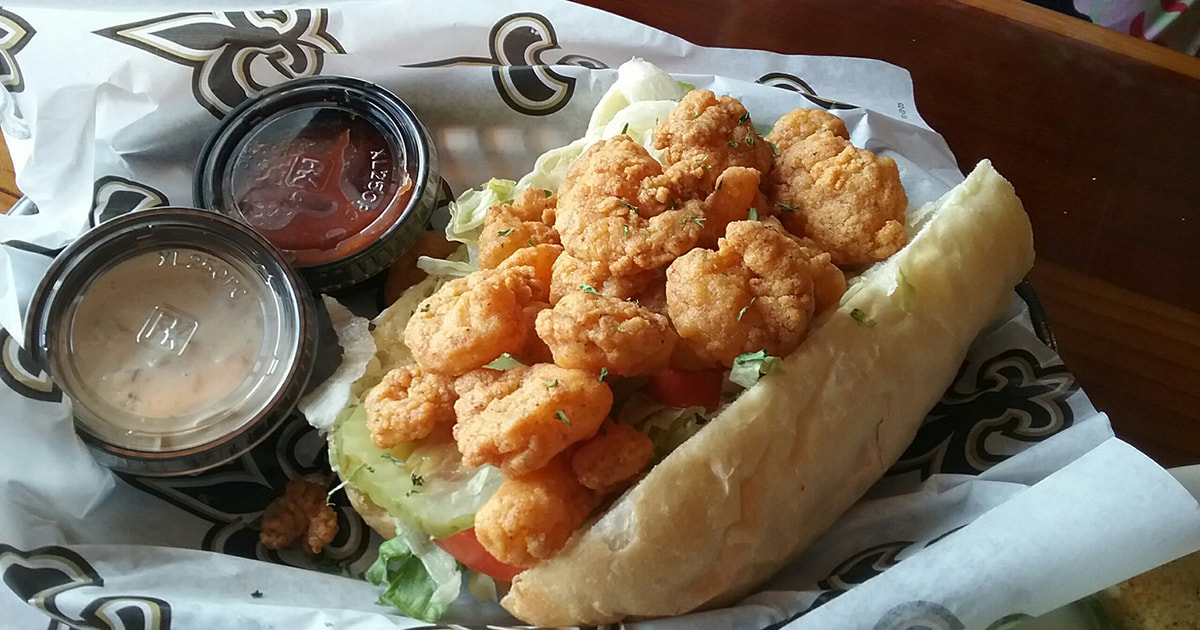



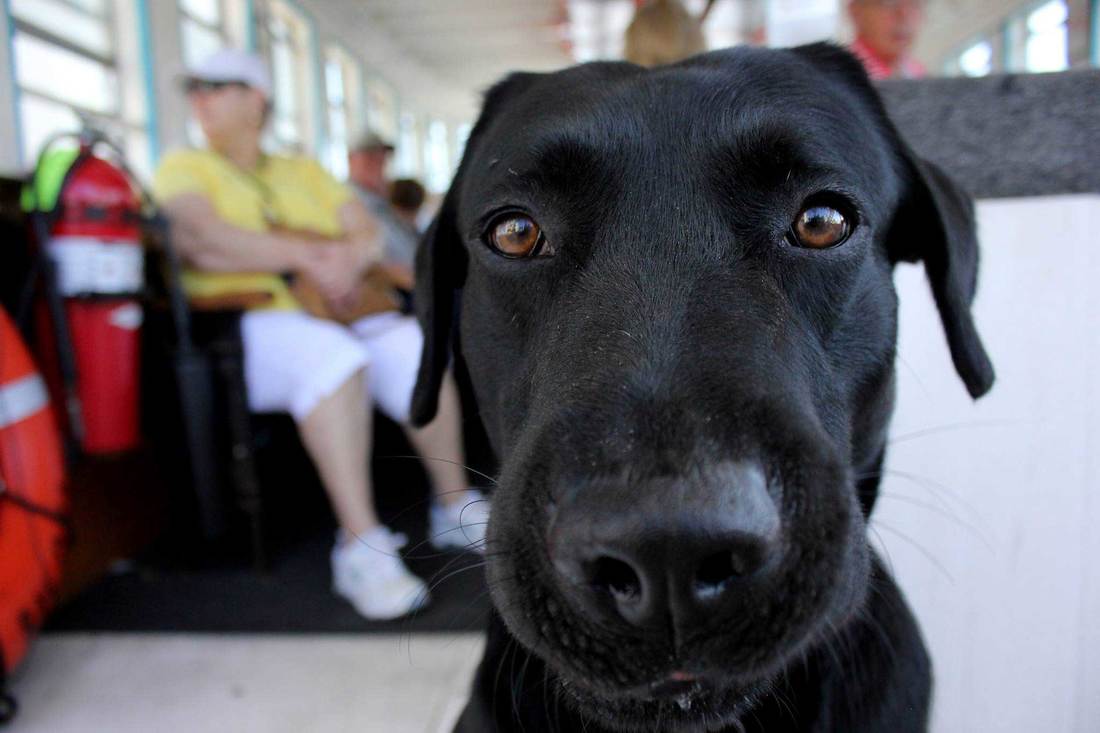
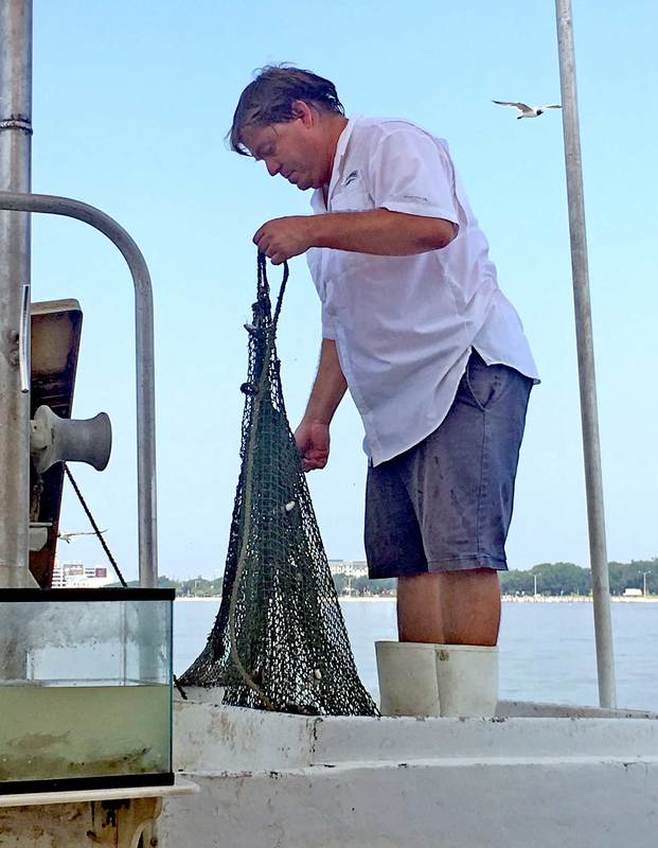





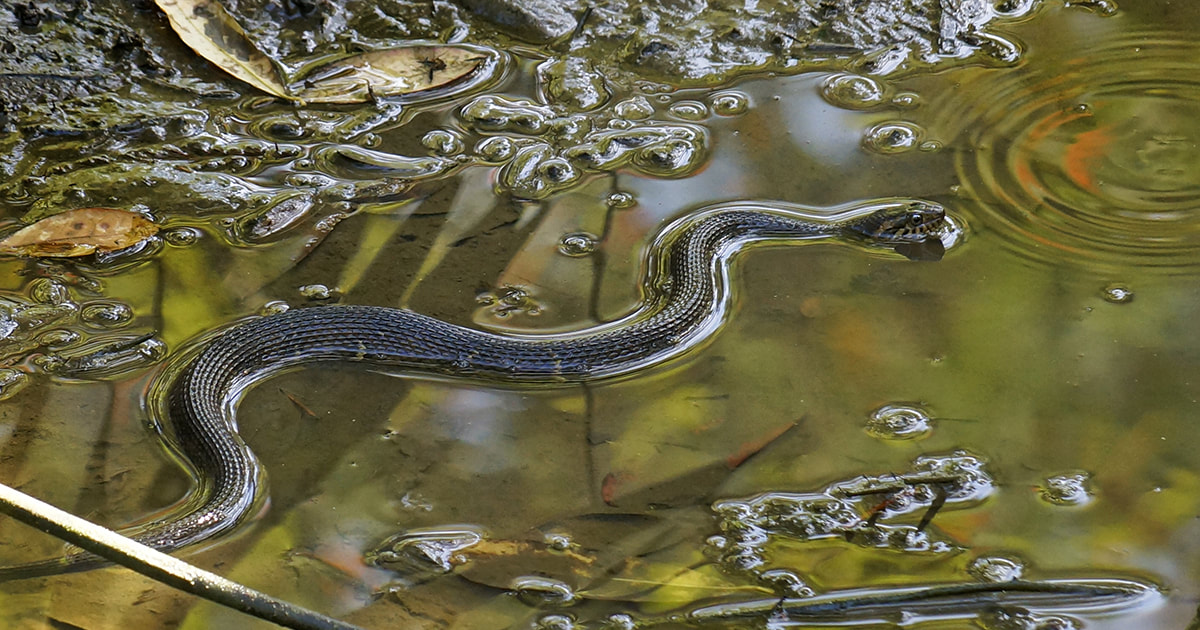














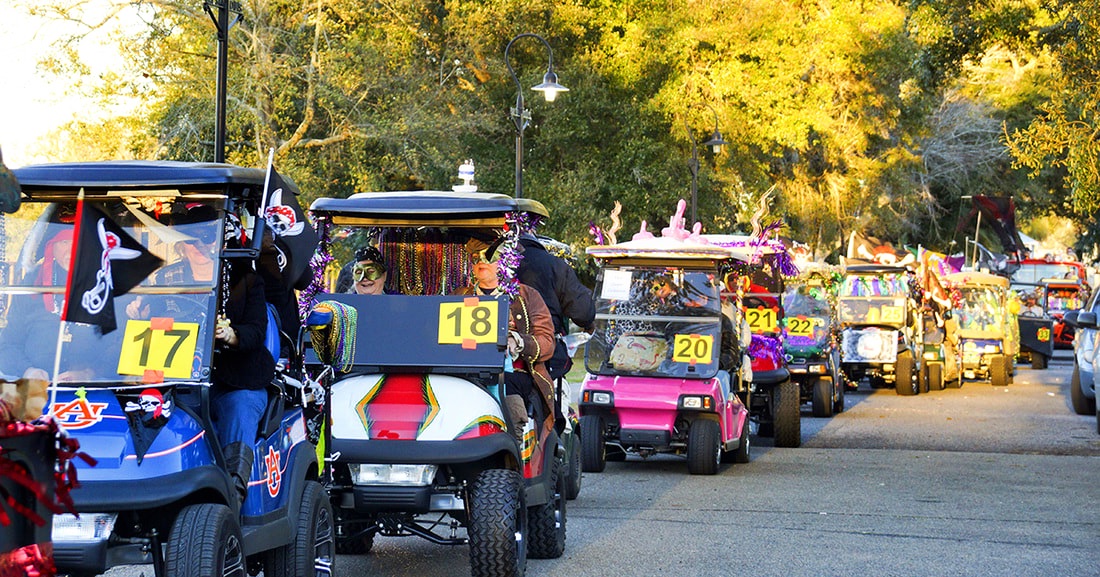















































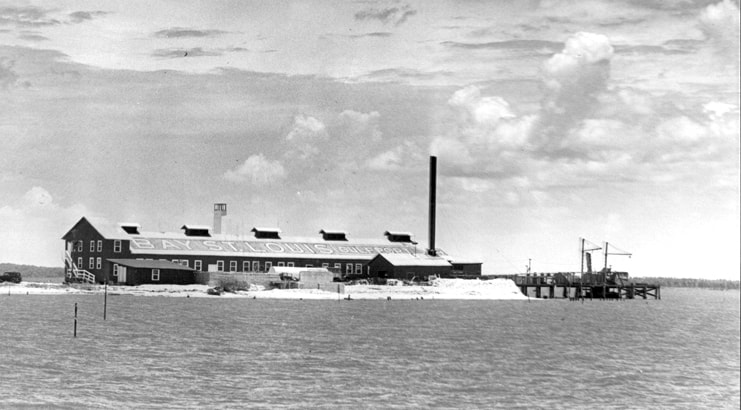


















































 RSS Feed
RSS Feed























